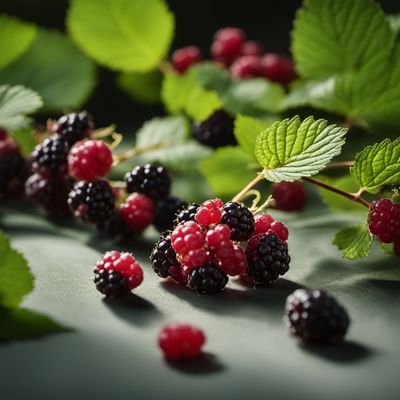
Ingredient
Raspberry (red and yellow) infusion leaves
The Fragrant Tea Leaves
Raspberry infusion leaves have a delicate aroma and a slightly sweet, fruity flavor. The red leaves have a stronger flavor compared to the yellow leaves. These leaves are typically dried and used to make herbal teas, but they can also be used as a garnish or infused into syrups and desserts for added flavor.
Origins and history
Raspberry plants are native to Europe and Asia and have a long history of cultivation. The leaves of raspberry plants have been used for centuries in traditional medicine for their potential health benefits. They are also popular in herbal tea blends for their pleasant flavor and aroma.
Nutritional information
Raspberry infusion leaves are low in calories and do not contain any significant amounts of nutrients. They are primarily used for their flavor and aroma in herbal teas.
Allergens
There are no known allergens associated with raspberry infusion leaves.
How to select
When selecting raspberry infusion leaves, look for leaves that are vibrant in color and free from any signs of mold or decay. The leaves should have a strong, pleasant aroma. If possible, choose organic leaves to avoid any potential pesticide residues.
Storage recommendations
To store raspberry infusion leaves, place them in an airtight container or a resealable bag and store them in a cool, dark place. Properly stored leaves can retain their flavor and aroma for up to a year.
How to produce
Raspberry plants can be grown in home gardens with proper care. They prefer well-drained soil and full sun. Regular watering and pruning will help promote healthy growth. Harvest the leaves when they are fully mature and dry them for later use.
Preparation tips
To prepare raspberry infusion tea, steep a handful of dried leaves in hot water for 5-10 minutes. Adjust the steeping time according to your desired strength. You can also combine raspberry leaves with other herbs or fruits to create unique tea blends. The leaves can also be used as a garnish for desserts or infused into syrups for added flavor.
Culinary uses
Raspberry infusion leaves are primarily used to make herbal teas. They can also be used as a flavoring agent in syrups, desserts, and cocktails. The leaves add a pleasant aroma and a subtle fruity flavor to various culinary creations.
Availability
Raspberry plants are commonly cultivated in temperate regions around the world, including Europe, North America, and parts of Asia. They are also available in dried form in most grocery stores and specialty tea shops.
More ingredients from this category » Browse all

Meadowsweet infusion leaves
The Nature's Elixir

Boldo infusion leaves
The Ancient Herbal Elixir: Unveiling the Power of Boldo Infusion Leaves

Horehound infusion leaves
The Bitter Herbal Elixir

Sweet trefoil infusion leaves
The Delicate Herbal Elixir

Sweet blackberry infusion leaves
The Berry's Aromatic Brew

Chiretta infusion leaves
The Bitter Elixir: Unveiling the Power of Chiretta Infusion Leaves

Lemon verbena infusion leaves
The Zesty Elixir: Unveiling the Magic of Lemon Verbena Infusion Leaves

Fumitory infusion leaves
The Herbal Elixir: Unveiling Fumitory Infusion Leaves

Clubmoss infusion leaves
The Ancient Elixir: Unveiling the Mysteries of Clubmoss Infusion Leaves

Currant (black, red and white) infusion leaves
Infusion Leaves: A Burst of Flavor and Health

Field horsetail infusion leaves
The Herbal Elixir: Field Horsetail Infusion Leaves

Horse-chestnut infusion leaves
The Healing Power of Horse-Chestnut Infusion Leaves